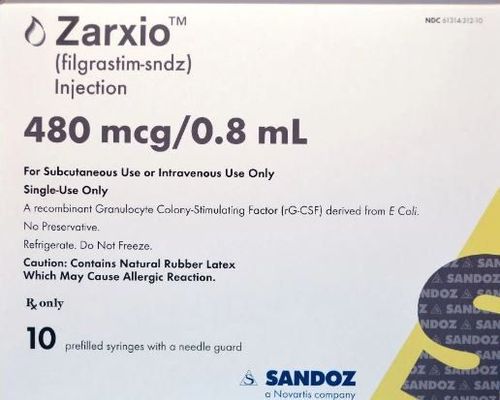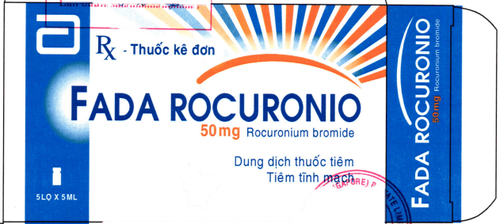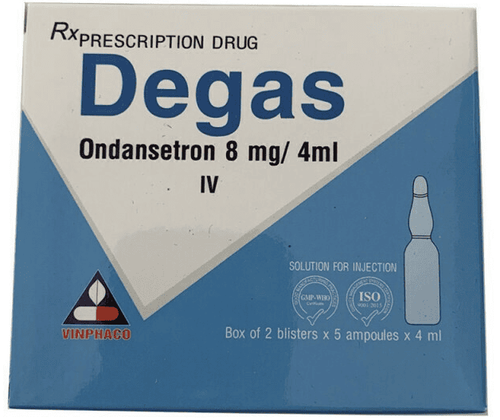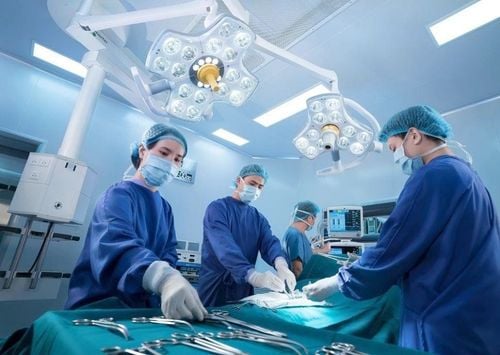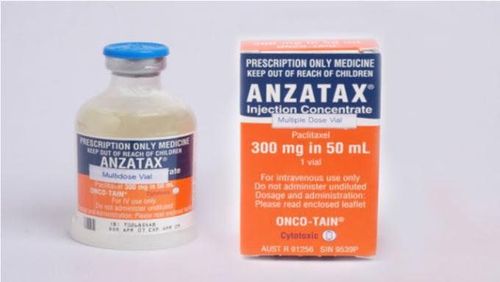This is an automatically translated article.
Prostate cancer occurs when the cells of the prostate gland grow abnormally or out of control. People with prostate cancer often live many years if detected and treated promptly because the growth rate of the disease is often quite slow. Currently, prostate cancer treatment methods are more and more diverse, giving patients more opportunities for cure as well as gradually reducing side effects during treatment. The following article will help you learn and treat prostate cancer as well as treatment methods.
1. Prostate cancer treatment regimen
Prostate cancer treatment regimens are indicated depending on the stage and risk group.
The stage of your cancer is one of the most important factors in choosing the best way to treat it. Prostate cancer is staged based on the extent (metastasis) of the cancer (using the T, N, and M classifications) and the PSA level and Gleason score when the disease was first diagnosed.
For prostate cancer that has not spread (stages I to III), doctors also use risk groups (based on prostate tumor growth, PSA level, Gleason Score, and outcome. prostate biopsy results) and make treatment options. Risk groups range from very low to very high risk, with cancers in lower risk groups having a smaller chance of growing and spreading than cancers in higher risk groups.
Other factors, such as your age, overall health, life expectancy and personal preferences are also taken into account when considering treatment options. In addition, determining treatment options is based on the risk of the cancer coming back after the initial treatment and the man's life expectancy.
Very low risk group:
Regular active follow-up is generally recommended In cases where the patient wants to start treatment, radiation therapy or radical prostatectomy may be an option. Low-risk group:
Active follow-up if you don't have serious health problems Other options, depending on your preferences, include radiation therapy or radical prostatectomy. If post-surgery shows that the cancer has features that make it more likely to come back, then: Radiation therapy and/or androgen removal therapy (ADT) or closely monitor PSA levels with radiation review Treatment as needed Intermediate risk group:
Radiation therapy and/or androgen removal therapy ADT Radical prostatectomy with pelvic lymph node dissection. Depending on the findings from surgery, treatments that may then be considered are: Radiation therapy and/or ADT therapy if there is a high probability of recurrence after surgery Closely monitor PSA levels for viewing radiotherapy when needed. Active surveillance High-risk groups: People with cancer in this group may be recommended:
Radiation therapy combined with ADT therapy for 1 to 3 years. Radical prostatectomy. If cancer is found to be more likely to return after surgery, ADT and/or radiation therapy or monitoring PSA closely after surgery to determine further treatment. Very high risk group: Treatment options for people in this group include:
Radiation therapy plus ADT for 1 to 3 years, sometimes with chemotherapy Special radical prostatectomy especially for young men. After prostate cancer surgery your doctor may recommend PSA monitoring or radiation therapy or ADT Stage IVA
For men who are healthy enough to be treated or have symptoms of cancer letter, options include:
Radiation therapy combined with ADT ADT Radical prostatectomy. Depending on the possibility of recurrence after surgery determines the next course of treatment Observation of prostate cancer Stage IVB
Stage IVB cancer has spread to distant organs such as bones. Most stage IVB cancers cannot be cured, but are treatable. The goal of treatment is to keep the cancer under control for as long as possible and to improve a man's quality of life. Treatment options such as ADT therapy, chemotherapy, radiation therapy, and surgery alone or in combination with patients who are older or have other serious problems and have no symptoms of cancer are warranted for observation. prostate cancer. The above options are for the initial treatment of prostate cancer in different risk groups and stages. But if these treatments don't work (the cancer continues to grow and spread) or if the cancer recurs, other treatments, such as immunotherapy or chemotherapy, can be used. therapy.
2. Prostate Cancer Treatments
2.1 Observation or active surveillance for prostate cancer Prostate cancer usually grows very slowly, for some men (especially those who are older or have other serious health problems) with this disease may never need treatment. So instead of prostate cancer treatments, your doctor may recommend active observation or surveillance.
The terms active surveillance and observation mean:
Active surveillance is often used to closely monitor cancer. This means you need to have some routine rectal exams, biopsies, and if the results change, your doctor will talk to you about treatment options to try and cure your cancer. Observation (watchful waiting) is often used to say less intensive monitoring can mean less testing and more based on changes in a man's symptoms to decide if treatment is needed. treat or not. 2.2 Prostate cancer surgery Prostate cancer surgery is a common option to try to cure prostate cancer if it is not thought to have spread outside the prostate gland.
The main type of surgery for prostate cancer is a radical prostatectomy. In this surgery, the surgeon removes the entire prostate gland plus some surrounding tissue, including the seminal vesicles.
The main methods of prostate cancer surgery today are:
Laparoscopic surgery Open surgery to remove the entire prostate: through the perineum or through the posterior pubic line. 2.3 Radiation therapy for prostate cancer Radiation therapy is a method of using high-energy rays or particles to kill cancer cells. Depending on the stage of prostate cancer and other factors, radiation therapy may be used:
As a first-line treatment for cancer that is still only prostate and low-grade . As part of first-line treatment (along with hormone therapy) for cancers that have grown outside the prostate gland and into nearby tissues. If the cancer is not completely removed or comes back (recurs) in the area of the prostate gland after surgery. If the cancer is advanced, to help control the cancer for as long as possible and to help prevent or relieve symptoms. The main types of radiation therapy used for prostate cancer are:
External beam radiation Brachytherapy (internal radiation) 2.4 Prostate cancer drugs 2.4.1 Hormone therapy Therapy Hormone therapy is also known as androgen suppression therapy. The aim is to lower the levels of male hormones - androgens in the body or prevent them from providing energy to the cancer cells of the prostate gland.
Reducing androgen levels or preventing them from entering prostate cancer cells often causes prostate cancer to shrink or grow more slowly for a while. But hormone therapy alone does not cure prostate cancer.
Types of hormone therapy:
Treatment to reduce testicular androgen levels: Androgen removal therapy, also known as ADT, uses surgery or medication to reduce androgen levels produced in the testicles. Prostate cancer drugs in this therapy include:
LHRH agonists such as: Leuprolide (Lupron, Eligard), Goserelin (Zoladex), Triptorelin (Trelstar), ... LHRH antagonists (LHRH antagonists) ): Degarelix (Firmagon), Abarelix (Planexis), ... Androgen Synthesis Inhibitors: Reduces androgen production by inhibiting the synthesis of an enzyme that plays an important role in the adrenal cycle of testosterone synthesis, testicles and cancer cells. Prostate cancer drugs of this group such as: ketoconazole, Abiraterone (Zytiga)
Anti-androgen drugs: compete with androgen receptors in target tissues thereby preventing the effects of androgens on cancer cells. The drugs in this group include:
Steroids: megestrol acetate (Megace), Cyproterone acetate (Androcur), ... Non-steroidal: Bicalutamide (Casodex), nilutamide (Nilandron),... 2.4.2 Chemotherapy anticancer drugs that are taken orally or injected into a vein. These drugs travel through the bloodstream to reach cancer cells in most parts of the body.
Some chemotherapy drugs used to treat prostate cancer include: Docetaxel (Taxotere), Cabazitaxel (Jevtana), Mitoxantrone (Novantrone)
In addition to the above methods, there are several other cancer treatments. Prostate cancer is also being applied such as: immunotherapy, targeted therapy, cryotherapy,...
Vinmec International General Hospital with the most advanced equipment, a team of doctors leading with many years of experience in the field of urology is the perfect healthcare address for you and your loved ones. Therefore, when you have health problems, you can go to the hospital for a private examination and advice on an effective treatment regimen.
Please dial HOTLINE for more information or register for an appointment HERE. Download MyVinmec app to make appointments faster and to manage your bookings easily.




